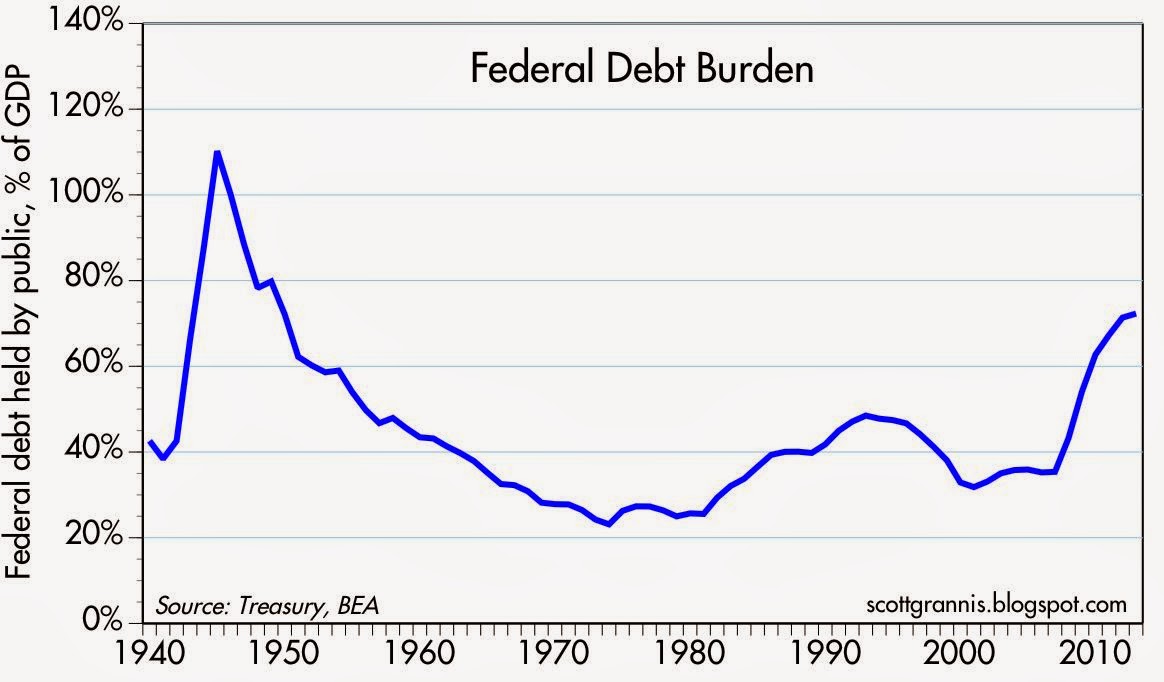Swap spreads are a great coincident indicator of financial market health and an equally great leading indicator of the health of the economy. They have been trading at very low levels for more than a year. This indicates that financial markets are extremely liquid and that systemic risk is very low. This, in turn, is a good sign that the outlook for the economy is positive. If financial fundamentals are in very good shape, it is likely that the economy will also be in good shape in the months to come.
Swap spreads are relatively low in the Eurozone as well, though somewhat higher than in the U.S. That is not surprising given the ongoing problems in the peripheral countries of the Eurozone. Regardless, the level of Eurozone swap spreads suggests that financial markets have not been destabilized by the troubling situation in the Ukraine, and that is good news.
For over a year, the prices of gold and 5-yr TIPS have been reasonably well correlated. Both have been declining (the chart above shows the real yield of 2-yr TIPS—inverted—as a proxy for their price) since early last year. I take this to be a sign that the market's demand for safe assets has declined, and that in turn is a sign that confidence is returning, and market participants are becoming somewhat less risk averse. Risk aversion has been one of the major headwinds that the economy has been facing since 2008.
Initial weekly claims for unemployment are a good indicator of the health of the labor market and businesses' appetite for risk. Claims are quite low and continue to fall, which suggests that labor market conditions are healthy and businesses see little need to downsize or reduce their risk.
Gold and commodity prices have been well correlated for a long time, but gold prices appear to have overshot commodity prices beginning about four years ago. For the past three years, commodity prices have been relatively stable, while gold prices appear to be slowly "relinking" to commodity prices. Falling gold prices tell me that speculative fears are gradually diminishing, while stable commodity prices tell me that the global economy remains relatively strong. If the Chinese economy were collapsing, as many seem to fear, commodity prices would not likely be this strong. If the situation in Ukraine posed existential risks to the rest of the world, gold prices would be rising, not declining.
The Vix index is a good proxy for the market's level of fear and uncertainty. The Vix has been relatively low and stable for the past year, which in turn suggests that the outlook for the economy has become less uncertain. Reduced uncertainty is a precondition for greater risk-taking, so this bodes well for the future.
The difference between the nominal yield on Treasuries and the real yield on TIPS tells us a lot about the market's inflation expectations. As the chart above shows, inflation expectations today are very similar to what they have been in the past 14 years. Stable inflation expectations and rising yields therefore mean that the rise in yields that began about a year ago has been driven by a rise in real yields. Higher real yields, in turn, reflect the market's belief that the outlook for the economy has improved. (If real yields had not risen as much as nominal yields that would have suggested that rising inflation fears were driving yields higher.)
U.S. and Eurozone equity markets continue to be well correlated, with the U.S. market doing noticeably better than the Eurozone since the outbreak of the Eurozone sovereign debt crisis a few years ago. Both markets have been moving up in sync since mid-2012, which suggests a synchronized recovery is underway, although the Eurozone is lagging.
Credit default swap spreads are highly liquid indicators of the market's perceived level of default risk in the economy. Investment grade and high-yield CDS spreads are very close to post-recession lows, but still somewhat higher than their pre-recession lows. This suggests some lingering risk aversion, which is consistent with my view that markets are become less risk averse and more prone to seeking out risk on the margin. The spread between high-yield and investment-grade CDS (second chart above) tells the same story. Overall, credit spreads tell us that the economic fundamentals are reasonably healthy and there has been no meaningful deterioration on the margin in recent months.
In the absence of any noticeable deterioration in these key indicators, and given that they all reflect healthy financial market and economic fundamentals, it is not surprising that the prices of risk assets continue to edge higher, especially since the yield on most risk assets is significantly higher than the yield on cash.

























































